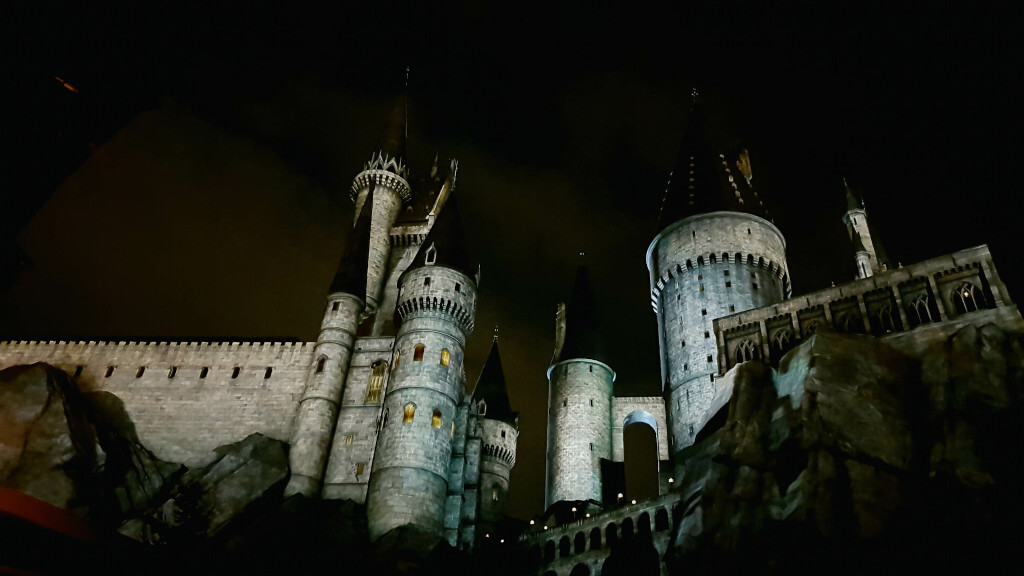Cameo by J.K. Rowling
Lily, Harry’s mother’s name, originates from the Latin word ‘Lilium,’ which is also the name of the author’s favourite flower. This was not a haphazard decision; rather, it reflects J.K. Rowling’s deep understanding of and investment in her characters. Many cultures associate the lily with ideas of purity, passion, rebirth, and transformation; these ideas resonate with Lily Potter and her position in the series. Lily, Harry’s mother, made the ultimate sacrifice to shield her son from Voldemort.
The TRUE Chosen One
In “Order of the Phoenix,” it is established that Harry or Neville Longbottom could fulfill the prophesy by vanquishing Voldemort. This new development enhances the plot in fascinating ways, highlighting themes such as free will, fate, and the thin line that separates heroes from regular people. The outcomes of one’s choices and the decisions they make are emphasised. Bravery and heroism can be found in unexpected places, and the possibility that Neville, a low-key figure who is often disregarded, could be the “Chosen One” challenges traditional views of heroism.
Seven Books in Seven Years
There are seven Harry Potter novels, one for each year of school at Hogwarts. This demonstrates J.K. Rowling’s dedication to the number seven, which has mystical connotations in many religions and cultures around the world. Seven is a significant number since there are seven players on a Quidditch team, seven hurdles around the Philosopher’s Stone, and seven years spent in school at Hogwarts. Rowling deftly employs this number as a structural element, strengthening the series as a whole.
Four Anime Suffixes
Animal-inspired names are given to Animagus wizards in the Harry Potter universe. This nuanced and brilliant touch by Rowling adds another dimension to the complex universe she built. Like the Dog Star in the constellation Canis Major, Sirius Black’s name “Sirius” alludes to his ability to change into a black dog. Rowling’s ability to weave real-world references into her fanciful world is on full display in the obvious connection between the name and the Animagus form.
The Wand of Voldemort
The phoenix Fawkes, who also provided a feather for Harry’s wand, is the source of the feather in Voldemort’s wand. The Priori Incantatem occurrence in “The Goblet of Fire” reveals this information. The series’ constant motif of the bond between the hero and the villain is exemplified by the link between Harry and Voldemort’s wands. Dumbledore’s ownership of Fawkes adds another layer to the series’ intricate web of ties and friendships.
The Symbol of the Deathly Hallows
A line, a circle, and a triangle make up the Deathly Hallows emblem. It’s a puzzling symbol, with the Elder Wand (the straight line), the Resurrection Stone (the circle), and the Invisibility Cloak (the triangle) each standing in for one of the three Hallows. The story of the Three Brothers in “The Deathly Hallows” is intrinsically linked to these artifacts. The symbol makes several subtle appearances before its meaning is revealed, heightening the story’s mystery and implying that knowledge of the Hallows has always been present yet is hidden in plain sight.
Platform 9 ¾
Between 9 and 10 at King’s Cross Station is apparently where you’ll find the enchanted platform. The parallel existence of the Wizarding World and the Muggle world, with the latter kept secret from the former, is emphasised by this particular. Three-quarters capture the essence of Harry’s trip as he hovers between two worlds because it is a fraction, suggesting an incomplete transition or a liminal place. The station lies in the middle, just as Harry is at the start of his adventure; he is neither a Muggle nor a wizard.
Scabbers
Ron’s rat Scabbers displays some odd behavior right away, suggesting his true identity. He’s missing a toe (as Peter Pettigrew was losing a finger), he’s very intelligent and self-aware for a rat, and he lives much longer than most rats do. It exemplifies Rowling’s talent for foreshadowing and her ability to plant information that would bear fruit many novels later. Realising who Scabbers is is just as upsetting for the reader as it is for the protagonists, and it adds a new perspective to the story.
The Chocolate Frog Card, as issued by Dumbledore
On Dumbledore’s card, it says that he and Nicolas Flamel are famous for their alchemy. With this nugget of information, the enigma at the heart of “The Philosopher’s Stone” is planted. Rowling subtly foreshadows future events by adding this information to the Chocolate Frog Card, an otherwise mundane collecting item, highlighting the vast past and broad world beyond Harry’s direct experiences.
Lupin the Werewolf
His given name, Remus, originates from the Latin word for wolf, while his surname, Lupin, alludes to the lupine plant. The fact that he’s a werewolf is hinted at by his name. Names in the Harry Potter universe frequently have meaningful connotations and assist in character development, as this subtle suggestion emphasises. In Roman mythology, Remus is said to have been nurtured by wolves, which may be a clue to his lycanthropy.
The Flower Translator
All three of Harry’s female relatives—his mother Lily, his aunt Petunia, and his girlfriend Pansy—have flower names with significance in the Victorian language of flowers. Each flower has its meaning: lilies represent innocence and purity, petunias indicate anger and bitterness, and pansies represent reflection and remembering. The names chosen for these characters provide additional insight into their personalities and roles in the plot.
Knockturn Alley and Diagon Alley
When said rapidly, “Diagon Alley” becomes “diagonally,” whereas “Knockturn Alley” becomes “nocturnally.” Wordplays like this help highlight the unique qualities of these locations. Diagon Alley is an odd and magical shopping sector named after the unusual intersection of two diagonal streets. Knockturn Alley on the other hand, with its ‘nocturnal’ implication, is a dangerous and ominous place where the Dark Arts come to life after dark.
Myrtle, Sighing
Myrtle is the name of a flower that is commonly used in funerals and has come to represent grief and the transience of life. This fits wonderfully with the figure of Moaning Myrtle, a ghost that appears in the girl’s restroom after she has died. The significance of Myrtle’s existence (or afterlife) is further emphasised by J.K. Rowling’s naming of this figure.
Almost Decapitated Death of Nick
Nearly Headless Nick’s 500th deathday is commemorated in “Chamber of Secrets,” with the date written in icing as “October 31, 1492.” This places the enchanted world firmly into its real-world context through a series of brilliant and subtle allusions to the Wizarding World’s past. Also, Harry, Ron, and Hermione receive the first message from the Heir of Slytherin on this day. The foreboding mood of the Deathday Party foreshadows this dramatic development.
Voldemort is Slain by Fred and George
Fred and George playfully hurl snowballs at Professor Quirrell, but neither the readers nor the twins realise that Voldemort is perched on the back of his skull. It’s only upon rereading that you realise they accidentally smacked Voldemort in the face, giving levity to an otherwise tense plot. This is yet another example of Rowling’s complex storytelling, in which seemingly innocuous events have far-reaching consequences. This scene is a perfect illustration of the twins’ playful temperament and a welcome dose of humour amid the story’s gloom.
About the Author:
Edmore Nkosi is a riveting South African journalist, specializing in entertainment and current affairs. With his unique ability to blend pop culture with real-world events, Edmore has carved a niche in providing captivating narratives that resonate with a diverse readership.




